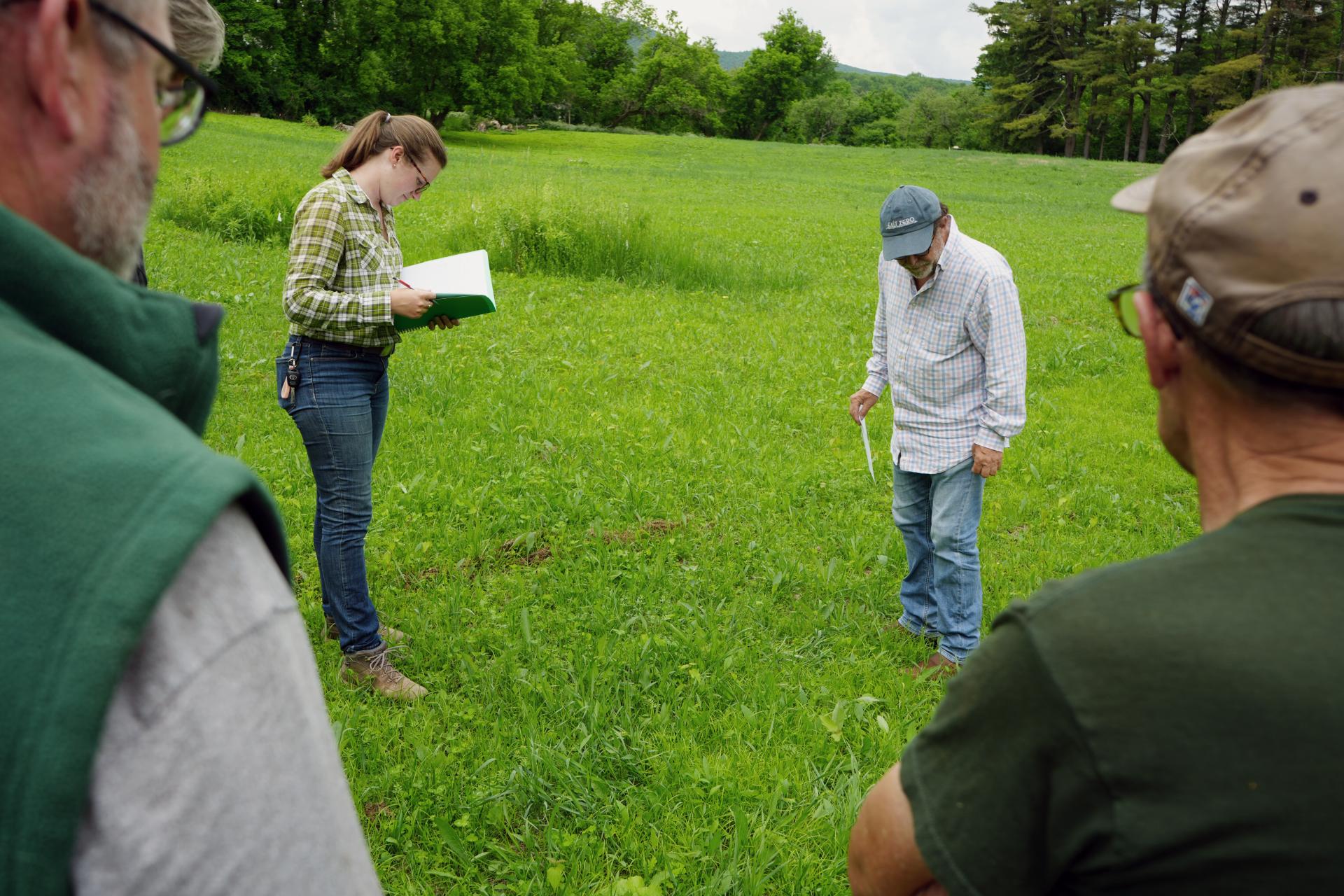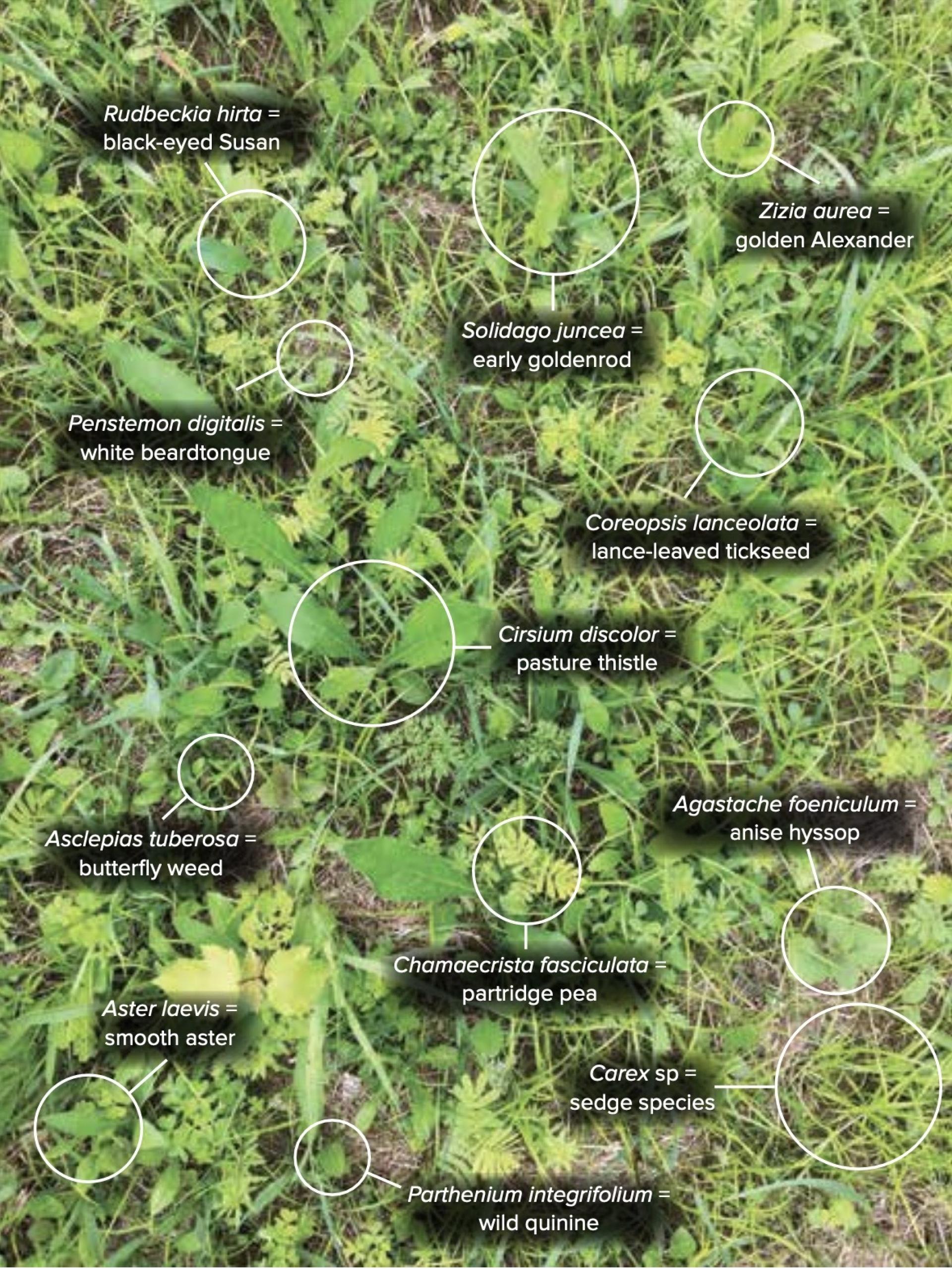You are here
Our Meadow in the Making
Our Meadow in the Making
Treading lightly out upon a verdant field of tender shoots, they had their fingers crossed. Would these 2.5 acres consist of a ghastly assemblage of garlic mustard, bittersweet, knotweed and whatnot? Or would its green groundcover consist of flora indicative of a nascent native meadow?
The verdict was swift.
“Seedling, seedling, seedling, seedling, seedling, seedling,” said Larry Weaner, of the Pennsylvania-based Larry Weaner Landscape Associates, as he strolled and pointed earthward. “It’s as good as it gets.”
That’s excellent news for Berkshire Botanical Garden’s efforts to create a meadow — a future home of healthy micro-habitats — upon a thumb-shaped appendage of land we acquired behind the Center House in 2019. The property includes an open meadow, a ridge and a wetland plateau. In the future, plans call for walking paths and public access to what BBG hopes (fingers still crossed) will become an ecologically and aesthetically complex and diverse showpiece and destination.
Weaner and his co-worker Marli Milano, a field operations coordinator, helped seed the bare field late last fall. Their check-up this June was one of several planned as they seek to ensure in the next two years the rooting and continued residency of a healthy array of native-dominated plant species.
A fear, especially of BBG’s Director of Horticulture Eric Ruquist, was that invasive weeds would get a running start on the meadow this spring and early summer, potentially smothering out the stated goal.
Since BBG’s revised meadow maintenance plan eliminates the use of herbicides, Ruquist had already begun to assemble a contingency plan involving volunteer weed warriors pressed to the hard labor of hand-weeding throughout the summer. Weaner, instead, advised monthly mowing through September at a height of 4 to 6 inches. (Some weeding by hand will have to happen, but nothing close to what Ruquist feared, had the seeding not been so successful.)
In addition, Weaner recommended establishing a narrow pathway along the edge where the meadow meets a poplar ridge. This will prevent poplar and goldenrod from pushing their colonies into the meadow.
“This is really great news,” Ruquist said.
Weaner and Milano confirmed the emergence of some invasives. Of most concern are the finely toothed bedstraw (Galium) and a climbing, morning- glory-wannabe called bindweed (Convulvulus), both perennial plants that can quickly take over and be difficult to eradicate once well established.
“With an early start to their removal,” said Milano, “these plant populations can be kept at a minimum with manual management.”
Ruquist mostly had been concerned about that noxious loiterer, garlic mustard (Alliaria petiolate), seen in several locations.
“I wouldn’t bother,” Weaner advised. “This meadow is vigorous enough that it will just swamp it out.”
Upon the ridge, the desirable species observed include poplar and gray dogwood. Weaner, whose design and restoration work spans more than 20 states and the United Kingdom, recommends
the poplar thicket be managed as an educational opportunity. He also suggested that Canada goldenrod (Solidago canadensis) be cut back from around each poplar and dogwood sapling to allow in more light. The weed species observed there include bindweed and grapevine.
On the wet plateau, the desirable species observed include Carolina rose (Rosa carolina), sensitive fern (Onoclea sensibilis), species of rush (Juncus), dewberry and strawberry. The weed species observed include bindweed, buckthorn and grapevine.
Among the seeded species observed in the meadow itself include horsemint (Monarda punctata), partridge pea (Chamaecrista fasciculata), smooth aster (Aster laevis), golden Alexander (Zizia aurea), white beardtongue (Penstemon digitalis), black-eyed Susan (Rudbeckia hirta), wild quinine (Parthenium integrifolium), pasture thistle (Cirsium discolor), butter weed (Asclepias tuberosa), anise hyssop (Agastache foeniculum), tickseed (Coreopsis lanceolata), and sedge species (Carex sp).
Milano said she expects seeded plants such as bush clover (Lespedeza) and sea holly (Eryngium) to show up later in meadow establishment, perhaps next year.
In addition to bedstraw, bindweed and garlic mustard, the weed species observed in the open meadow portion of the property include lamb’s quarters (Chenopodium album) and wild carrot (Daucus carota).
Walking through the meadow in June, the good news came as a chorus that was only natural.
“This is the partridge pea,” said Weaner.
“They look like mini mimosa trees,” Milano said.
“And that’s definitely sedge,” said Ruquist.
“Very good,” said Weaner. “The sedge is running all through. That’s what you want, something that kind of ties everything together.”
“Black-eyed Susan,” said Duke Douillet, BBG’s senior gardener.
“Right here, is this bee balm?” Weaner speculated. “I’ll tell you in a sec.”
He snapped off a leaf, rubbed it and smelled.
“Yep, bee balm,” he said. “Seedling, seedling, seedling, seedling, seedling, seedling.”
Help Our Garden Grow!
Your donation helps us to educate and inspire visitors of all ages on the art and science of gardening and the preservation of our environment.
All donations are 100 percent tax deductible.




